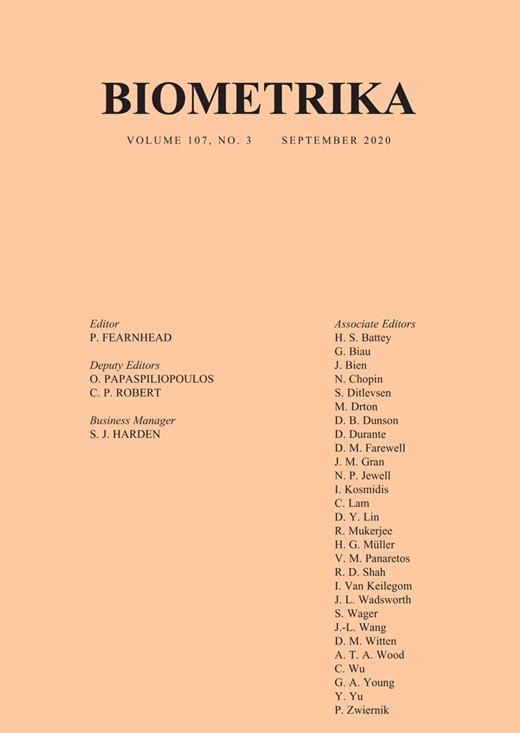-
Views
-
Cite
Cite
E Dobriban, Fast closed testing for exchangeable local tests, Biometrika, Volume 107, Issue 3, September 2020, Pages 761–768, https://doi.org/10.1093/biomet/asz082
Close - Share Icon Share
Summary
Multiple hypothesis testing problems arise naturally in science. This note introduces a new fast closed testing method for multiple testing which controls the familywise error rate. Controlling the familywise error rate is state-of-the-art in many important application areas and is preferred over false discovery rate control for many reasons, including that it leads to stronger reproducibility. The closure principle rejects an individual hypothesis if all global nulls of subsets containing it are rejected using some test statistics. It takes exponential time in the worst case. When the tests are symmetric and monotone, the proposed method is an exact algorithm for computing the closure, is quadratic in the number of tests, and is linear in the number of discoveries. Our framework generalizes most examples of closed testing, such as Holm’s method and the Bonferroni method. As a special case of the method, we propose the Simes and higher criticism fusion test, which is powerful both for detecting a few strong signals and for detecting many moderate signals.



